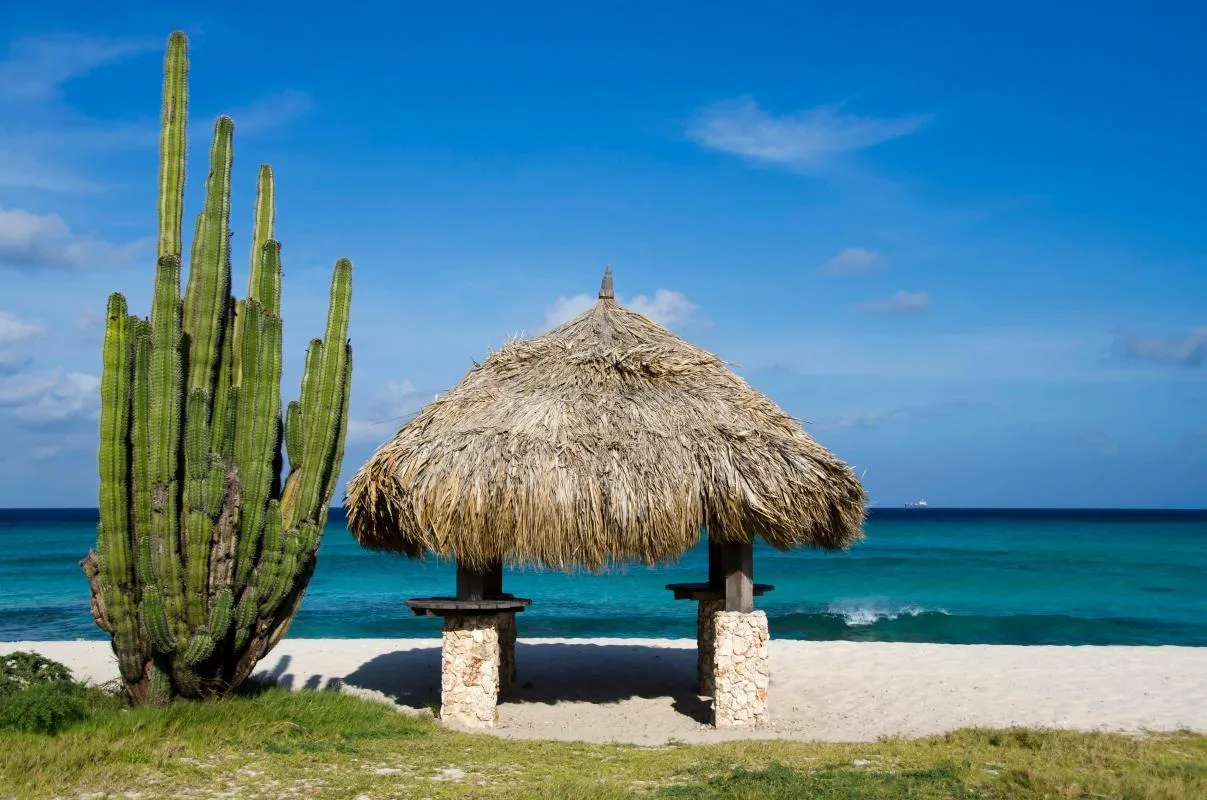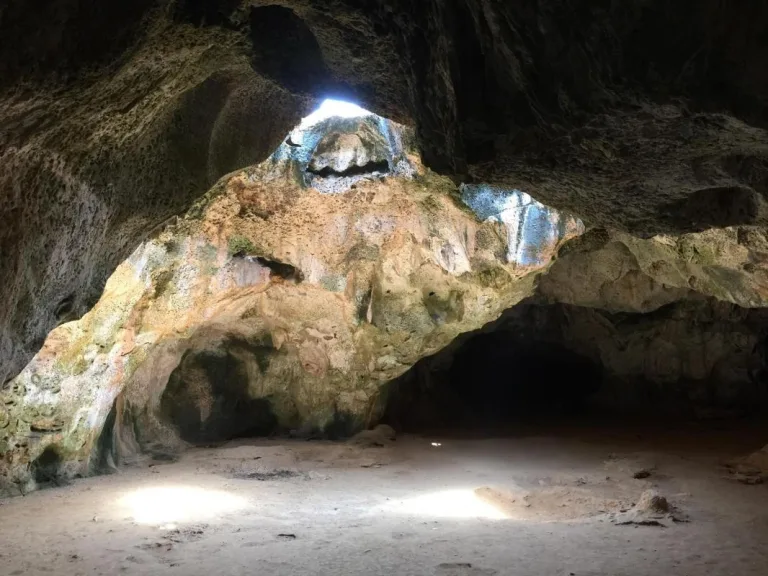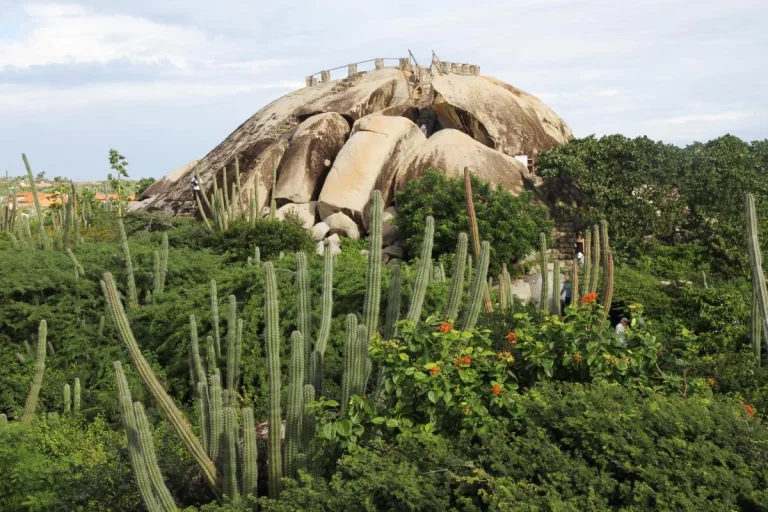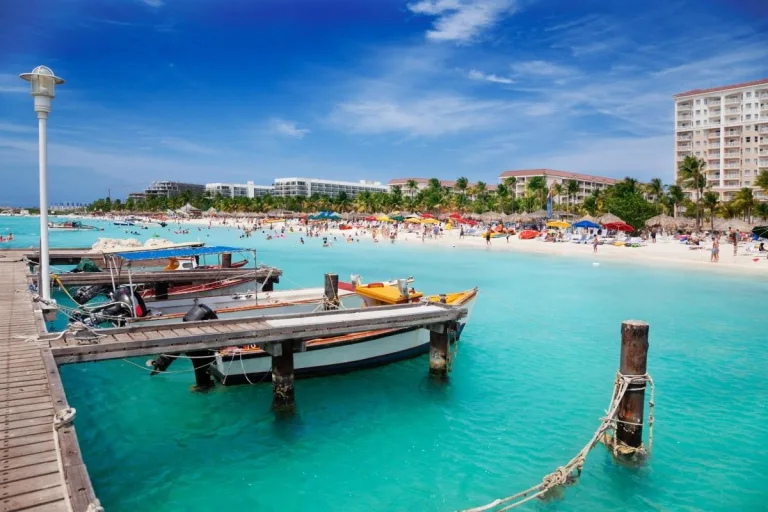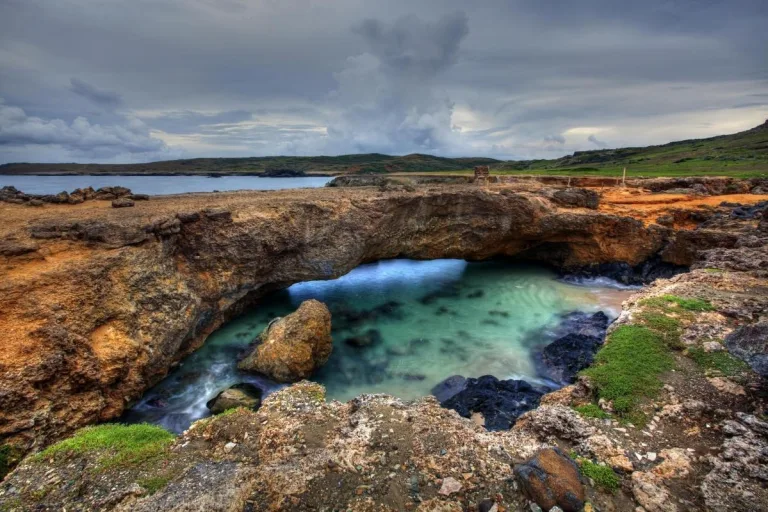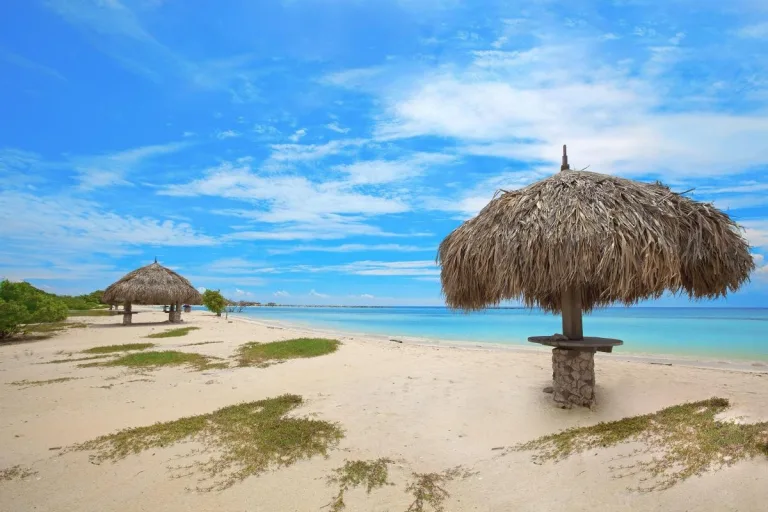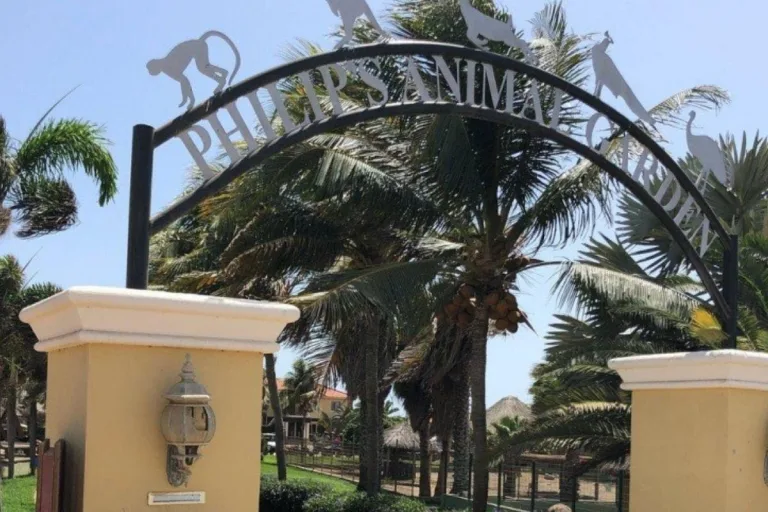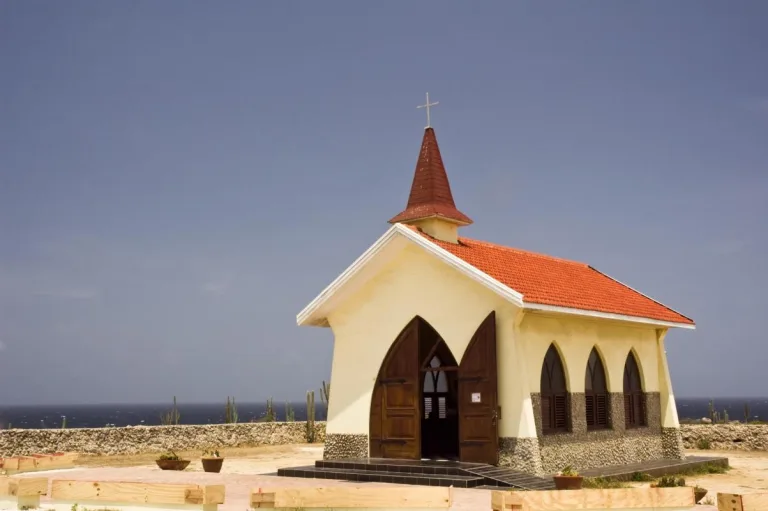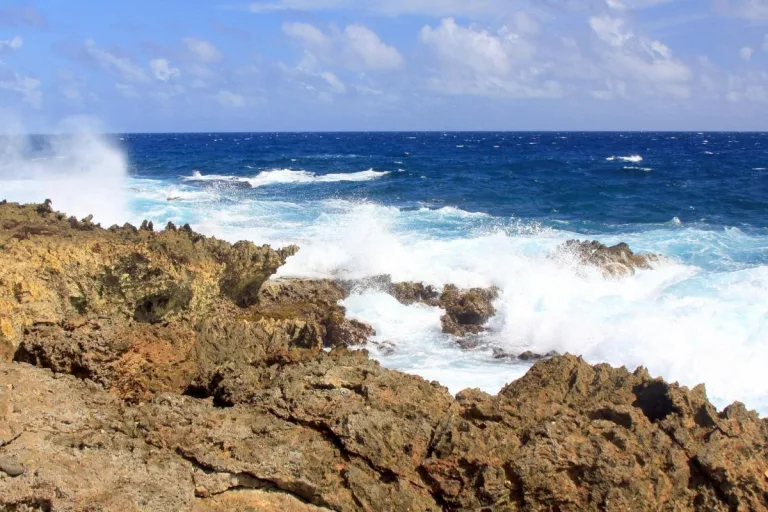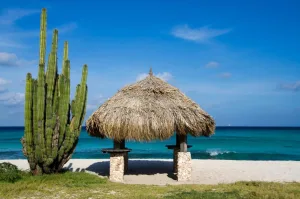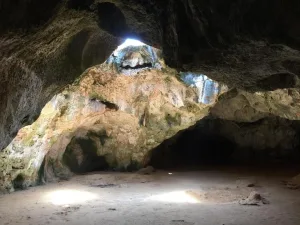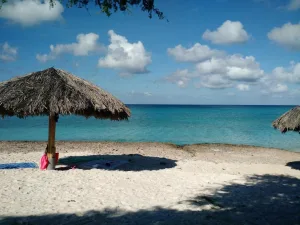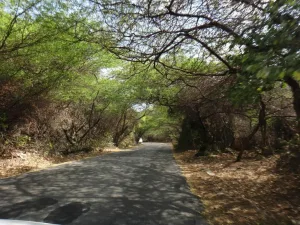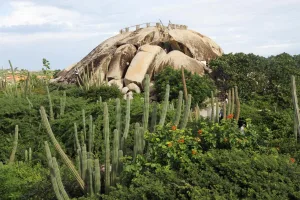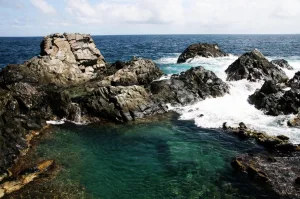Arashi Beach, one of Aruba’s northernmost beaches, is a secluded spot popular with diehard divers and serious sunbathers alike. Arashi’s clear water, soft sandy bottom, and generally calm surf make it ideal for swimmers and snorkelers as well.
Arashi Beach features a few huts for shade, some picnic tables, and soft white sand as far as the eye can see. Arashi is a destination beach for scuba divers, as it is the final resting spot of the WWII German freighterAntilla. Other popular water sports include windsurfing, which makes for a good show from the shore even if you aren’t participating.
Island tours via bus, Segway, or ATV frequently make a quick stop at Arashi, along with other nearby highlights such as the California Lighthouse, Arikok National Park, and the Casibari rock formation. You can book beach-focused guided tours, which typically stop at the nearby Boca Catalina, Malmok Beach, Baby Beach, and the Natural Bridge. Most Aruba island snorkeling and scuba diving tours via boat make stops off Arashi to check out the SSAntilla shipwreck, along with the Natural Pool.
-
The only amenity here is the Arashi Beach Shack, serving snacks and drinks, located right off the parking lot.
-
Bring your own snorkeling gear for safe, independent snorkeling right off the beach.
-
Gentle currents and a shallow approach make Arashi a safe option for families with small kids.
-
There are no restrooms on-site.
Arashi is located in Noord, on the border of the Palm Beach residential area and just north of Malmok Beach. Most travelers stop here on the way to the California Lighthouse, and both destinations can be reached via L.G. Smith Boulevard. The beach has a large parking area, and the Arubus stops there as well.
The crowd density on the beach depends on the season (January to March is most crowded), the snorkeling and diving conditions of the day, and the occupancy of the few small hotels nearby. Due to its western location, Arashi is a great place to watch the sunset.
Sunk off the coast of Aruba in 1939, the German SSAntilla ship was intentionally scuttled by its crew when Germany invaded the Netherlands. It is now home to sponges, coral, hawksbill turtles, and lobsters. One of the Caribbean’s largest wrecks, theAntilla lies in about 60 feet (18 meters) of water and is even visible above the surface at times.

